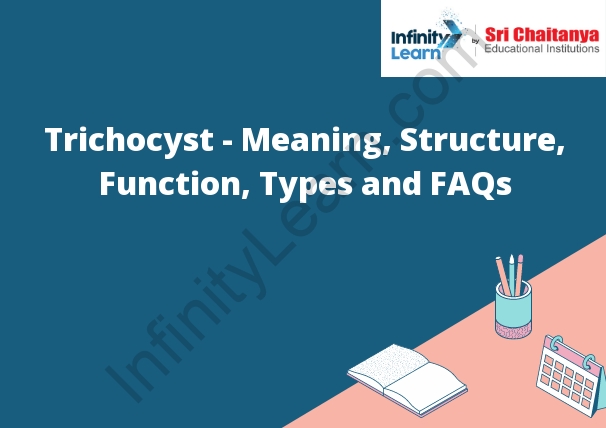Table of Contents
What is Trichocyst?
A trichocyst is a microscopic, hair-like projection from the surface of a cell. They are found in a variety of organisms, including unicellular protists, ciliates, and some bacteria. Trichocysts are used for a variety of purposes, such as locomotion, prey capture, and defense.A trichocyst is a small, hair-like projection on the surface of a eukaryotic cell. Trichocysts are found in the cells of some protists, algae, and fungi. They are used for defense, prey capture, and attachment.

Trichocyst in Paramecium
A trichocyst is a hair-like structure found in some protozoan cells, including Paramecium. Trichocysts are used for defense and for prey capture. When the trichocyst is discharged, it can puncture the cell membrane of another organism, which can then be ingested by the Paramecium.
Types of Trichocysts
Trichocysts are tiny, thread-like organelles found in the cytoplasm of some cells. They are used to inject toxins into prey or enemies, and can also be used for defense.
There are several types of trichocysts, including:
1. Spindle-shaped trichocysts, which are used for prey capture and defense.
2. Elongated trichocysts, which are used for prey capture.
3. Short trichocysts, which are used for prey capture and defense.
4. Contractile trichocysts, which are used for prey capture and defense.
5. Bulbous trichocysts, which are used for prey capture..
Toxicysts
A toxicyst is a type of cyst that contains a poison. Toxicysts are most commonly found in the liver, but they can also be found in other organs, such as the pancreas. Toxicysts are formed when the cells that produce the poison become trapped in a cyst. The poison can cause damage to the cells around it, and it can also be released into the bloodstream. Toxicysts can be caused by a variety of things, including infections, tumors, and exposure to toxins. Treatment for toxicysts depends on the cause, but may include surgery, chemotherapy, or radiation therapy.
are cells that produce toxins. They are often found in the gut of certain types of marine animals, such as sea urchins and sea stars. The toxins can be very harmful to other marine animals, including humans.The term toxicyst is used to describe a type of cell found in some types of tumors. Toxicysts are cells that have the ability to produce and release toxins. These toxins can cause damage to the cells around them, and can also spread to other parts of the body. Toxicysts are thought to play a role in the development and progression of tumors.
Function of Trichocysts
Trichocysts are tiny, threadlike organelles found in the cytoplasm of some cells. They are secreted by the cells and can be used for a variety of functions, such as defense, prey capture, and movement.
Trichocysts can be used for defense against predators or competitors. For example, some cells in the ciliate protozoan Paramecium can release trichocysts that contain toxins. These toxins can kill other cells or organisms. Trichocysts can also be used to capture prey. For example, some cells in the slime mold Dictyostelium can release trichocysts that contain sticky proteins. These proteins can stick to prey, making it easier for the cell to capture and eat it. Trichocysts can also be used for movement. For example, some cells in the ciliate protozoan Tetrahymena can use their trichocysts to move around.
Structure of Trichocysts
The structure of a trichocyst is simple, consisting of a single, coiled filament. The filament is enclosed in a sheath and is anchored to the cell membrane. When the trichocyst is ejected from the cell, the filament unwinds and becomes straight. This causes the sheath to open, exposing the filament to the outside environment.
Trichocysts are produced by a process called extrusion. This occurs when the cell membrane bulges out and the trichocyst is ejected from the cell. The filament is formed by the protein actin, which is surrounded by DNA. The DNA directs the formation of the filament, and the protein helps to stabilize it.
Trichocysts are used for defense by trapping and immobilizing prey. They can also be used to attack predators or other cells. The filament is sharp and can easily pierce the cell membrane. Once the filament is in the cell, it begins to coil up, trapping the prey inside.
Trichocysts are tiny, hair-like organelles found in the cytoplasm of some cells. They are used to help the cell capture and kill prey, as well as to defend the cell against predators. Trichocysts are made up of three parts: the stalk, the sheath, and the filament. The stalk is the longest part of the trichocyst and is used to anchor it to the cell. The sheath is a protective covering that covers the filament. The filament is the part of the trichocyst that is used to capture prey or to defend the cell. Trichocysts are about 1-2 micrometers in length.









